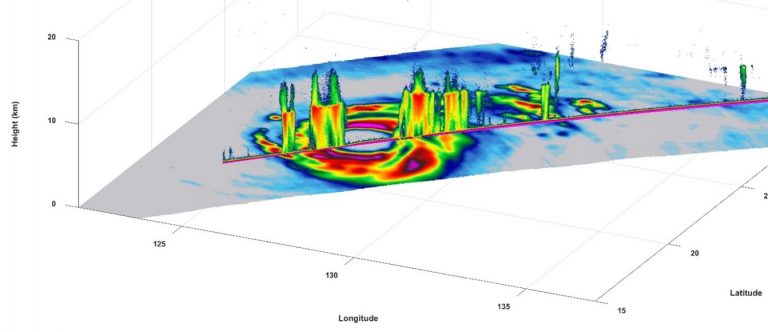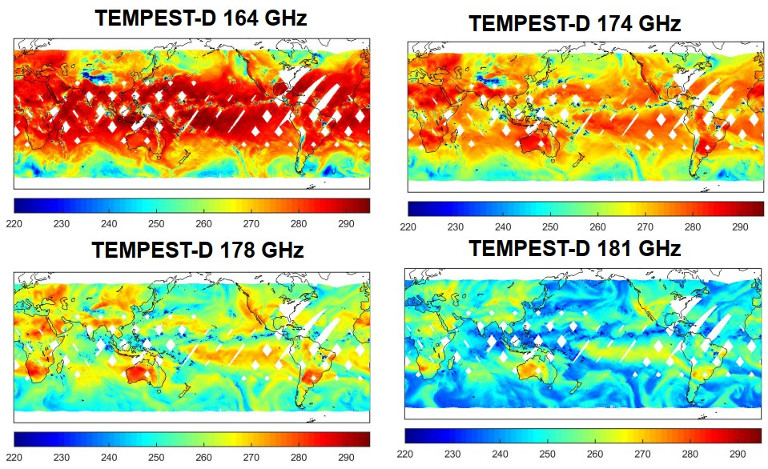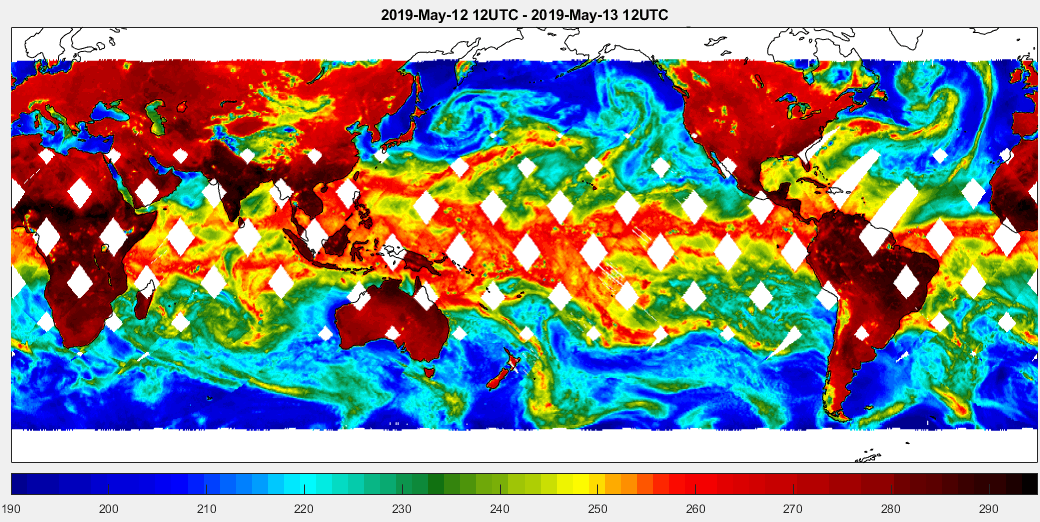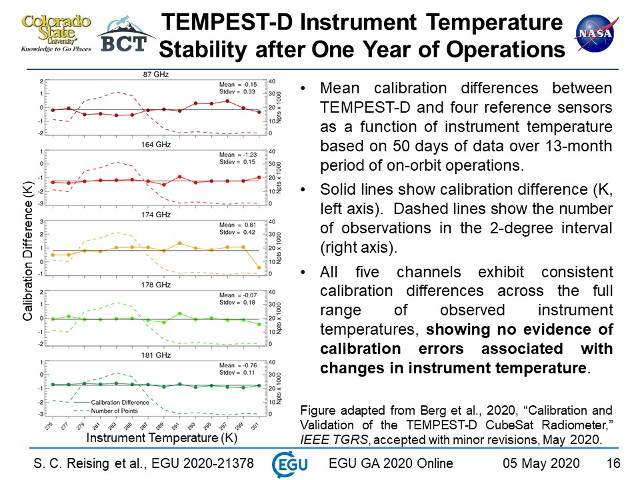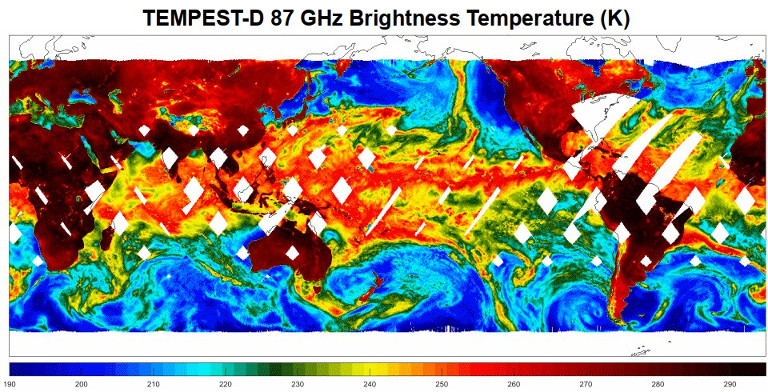After achieving first light on September 5, 2018, the TEMPEST-D mission has successfully achieved TRL 9 for both the instrument and spacecraft systems. TEMPEST-D performed its first full-swath orbital observations capturing Hurricanes Florence and Helene over the Atlantic Ocean on September 11, 2018, revealing the eyes of the tropical cyclones surrounded by towering, intense rain bands using a millimeter-wave radiometer on a CubeSat.
TEMPEST-D brightness temperatures have been compared with those of four on-orbit reference sensors observing at similar frequencies, including the NASA/JAXA Global Precipitation Mission Microwave Imager (GMI) and the Microwave Humidity Sounders (MHS) on NOAA and EUMETSAT operational meteorological satellites. Cross-calibration results based on 50 days of data over a 13-month period demonstrate TEMPEST-D absolute calibration accuracy within 1 K of reference sensors, as well as TEMPEST-D calibration precision within 0.7 K of reference sensors, well within the mission requirements. This level of agreement indicates that TEMPEST-D is a very well-calibrated and stable radiometer with very low noise, rivaling that of much larger and more expensive operational instruments. After more than 20 months since first light, TEMPEST-D continues to produce global science data from low Earth orbit.
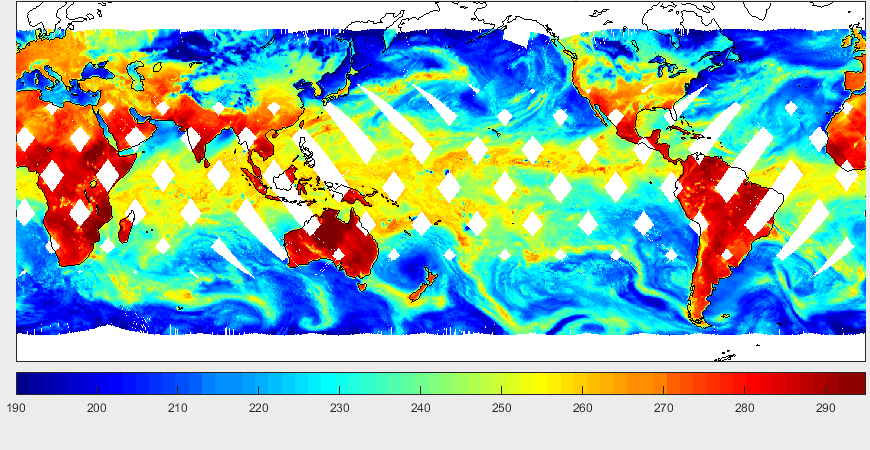
Animation of global brightness temperature measurements (K) at 87 GHz performed by TEMPEST-D on 8-12 December 2018. Calibrated brightness temperatures are shown, but fine geolocation correction has not yet been applied.
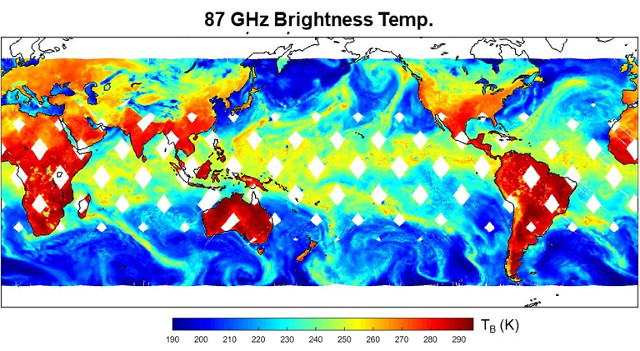
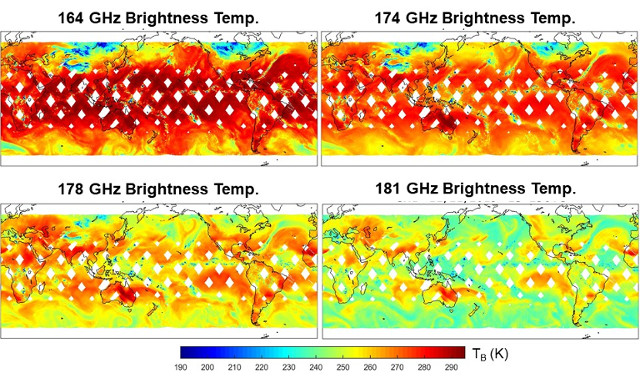
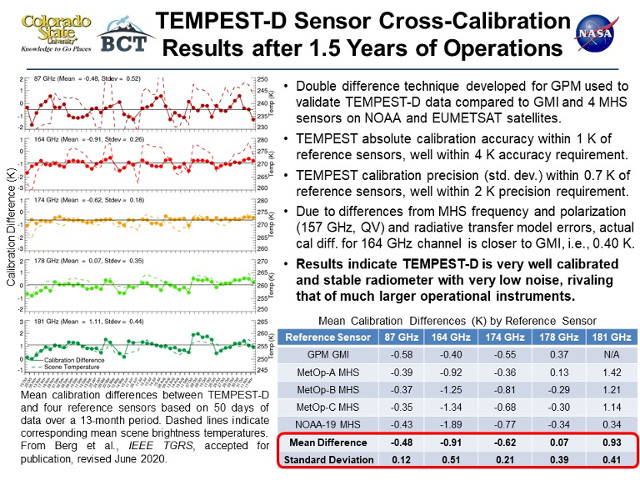


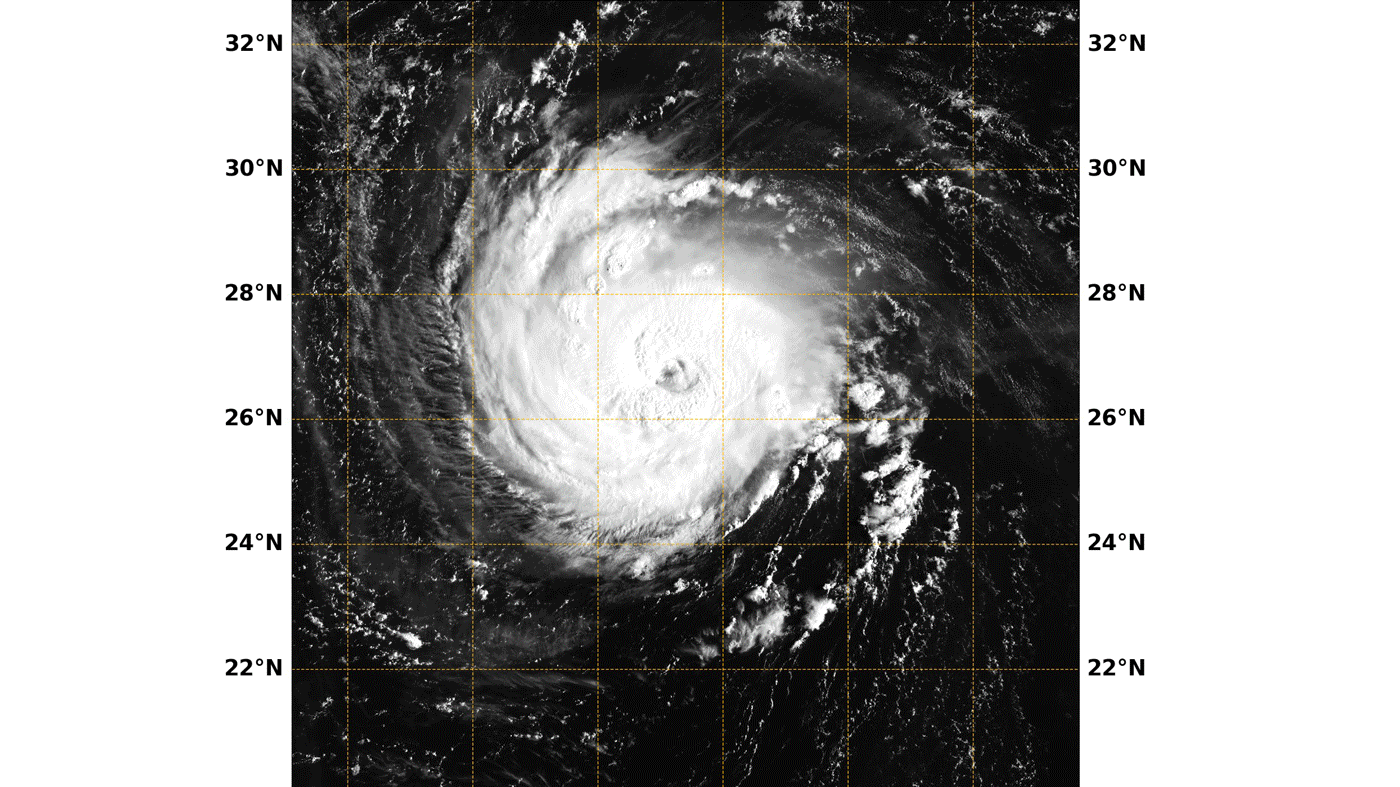
This animation combines the TEMPEST-D (Temporal Experiment for Storms and Tropical Systems Demonstration) data with a visual image of the storm from NOAA's GOES (Geoweather Operational Environmental Satellite) weather satellite. The brightly colored image taken by TEMPEST-D captures Hurricane Florence over the Atlantic Ocean. The colors reveal the eye of the storm, surrounded by heavy rain. The green areas highlight the extent of the rain being produced by the storm, with the most intense rain shown in the yellow and red areas. In contrast, the greyscale shows the visible image of Florence taken by the GOES weather satellite, which shows the familiar cyclone-shaped clouds of the storm, but doesn't reveal what's inside.
Image Credit: NASA/NOAA/Naval Research Laboratory Monterey/JPL-Caltech
